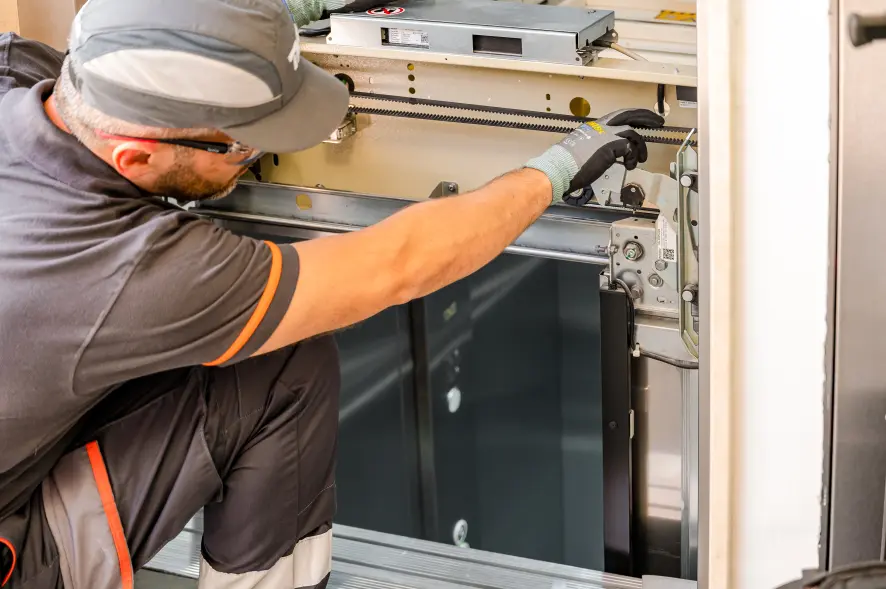Checking Out the Comprehensive Measures Required for Lift Upkeep
In the realm of structure maintenance, making certain the correct functioning and security of lifts is critical. The complexity of elevator systems calls for a thorough strategy to maintenance. From regular examinations to tactical modernization plans, a holistic sight of maintenance is necessary. In the ever-evolving landscape of lift technology and safety and security requirements, there are detailed actions that need to be carefully complied with to guarantee optimum efficiency and conformity. By resolving essential facets such as positive upkeep routines, safety checks, and emergency readiness, a thorough understanding of the complexities entailed in lift upkeep can result in enhanced effectiveness and safety.
Normal Inspections
When it involves guaranteeing the longevity and safety of your lift system, normal assessments are vital. These routine checks play a crucial role in recognizing any kind of possible problems before they intensify into significant problems, making certain the smooth and safe procedure of the lift. By performing normal examinations, upkeep groups can proactively attend to deterioration, malfunctioning elements, or any type of other issues that may compromise the lift's performance or safety and security.
Throughout these evaluations, educated experts thoroughly take a look at various elements of the lift system, consisting of mechanical components, electric systems, security features, and total structural stability. By spotting and resolving issues early on, these inspections aid avoid pricey repair work, downtime, or safety and security risks, inevitably extending the life expectancy of the lift system and ensuring the wellness of its individuals.
Aggressive Maintenance Schedules
Carrying out aggressive maintenance routines is essential for making the most of the performance and longevity of lift systems. By adhering to a positive upkeep approach, lift proprietors can address prospective concerns prior to they rise into significant issues, inevitably minimizing downtime and pricey fixings. Positive upkeep entails normal inspections, lubrication of moving parts, testing safety features, and replacing worn components. These set up upkeep jobs not just assist in stopping failures yet additionally add to preserving the lift's performance at ideal levels.
A well-structured positive upkeep timetable must detail particular jobs, regularities, and responsible employees. When producing these schedules to make certain the lift operates safely and effectively, it is essential to adhere to maker recommendations and market standards. In addition, documenting upkeep activities and maintaining detailed documents can provide beneficial insights right into the lift's performance gradually, aiding in recognizing trends and making educated maintenance choices.

Security Conformity Checks
Making sure safety conformity through complete checks is critical in keeping lift systems' dependability and guarding individual well-being. Security compliance checks include a comprehensive examination of various elements, including electrical systems, mechanical components, emergency brakes, doors, and other essential safety functions. These checks are important to determine any kind of potential risks or breakdowns that can compromise the lift's operation and put individuals in danger.
Regular safety compliance checks must be performed by qualified service technicians in adherence to sector regulations and standards. These checks assist in finding concerns beforehand, allowing for timely repair work and precautionary upkeep procedures to be applied. Maintaining in-depth records of security conformity checks is web vital for tracking the lift system's efficiency over time and showing compliance with safety laws.
Tools Upgrades and Innovation
Enhancing lift systems with tools upgrades and innovation is vital for boosting effectiveness and safety criteria in vertical transport. As innovation advancements, older lift systems might end up being outdated, causing decreased integrity and potential safety and security risks. By spending in devices upgrades and innovation, building proprietors can guarantee that their lifts fulfill current market standards and guidelines.
In enhancement to functional benefits, devices upgrades and innovation projects can also improve the aesthetics of the lift, supplying an extra modern and appealing experience for passengers. Ultimately, purchasing lift upgrades and innovation is an aggressive approach towards guaranteeing the long life, safety and security, and performance of vertical transportation systems.
Emergency Readiness Preparation
A reliable emergency readiness strategy is important for guaranteeing the safety and security and swift action in situation of unexpected occurrences entailing lift systems. Emergency situation readiness additional reading planning for lift systems includes an organized approach to minimize risks, ensure traveler safety and security, and reduce downtime during emergency situations.
Trick parts of an emergency preparedness prepare for lifts consist of clear interaction procedures, routine training for lift drivers on emergency situation treatments, and routine drills to examine the performance of the plan. lift engineer. Furthermore, the strategy ought to detail specific duties and duties for all stakeholders entailed, consisting of structure management, upkeep workers, and emergency responders
In case of a lift breakdown or entrapment, having a distinct emergency situation plan can help in coordinating a reliable and prompt reaction to ensure the safety and well-being of travelers. Timely communication, accessibility to emergency tools such as communication tools and emergency situation lighting, and understanding of discharge procedures are vital facets of an extensive emergency situation readiness prepare for lift systems. By prioritizing emergency situation readiness preparation, building supervisors can boost the overall safety and reliability of their lift systems.
Conclusion
To conclude, the thorough measures needed for lift upkeep include normal evaluations, proactive maintenance routines, safety compliance checks, tools upgrades and modernization, and emergency situation readiness preparation. These actions are necessary for ensuring the safety, integrity, and performance of lifts in various settings. By carrying out these actions, lift owners can decrease the danger of crashes, expand the life-span of their tools, and conform with market regulations.

During these inspections, educated specialists thoroughly take a look at numerous facets of the lift find system, consisting of mechanical components, electrical systems, safety and security features, and overall structural stability.Guaranteeing safety conformity via extensive checks is paramount in maintaining lift systems' dependability and safeguarding individual wellness. Maintaining comprehensive records of safety compliance checks is critical for tracking the lift system's performance over time and showing compliance with safety policies.
By prioritizing emergency preparedness planning, building managers can boost the general security and integrity of their lift systems.